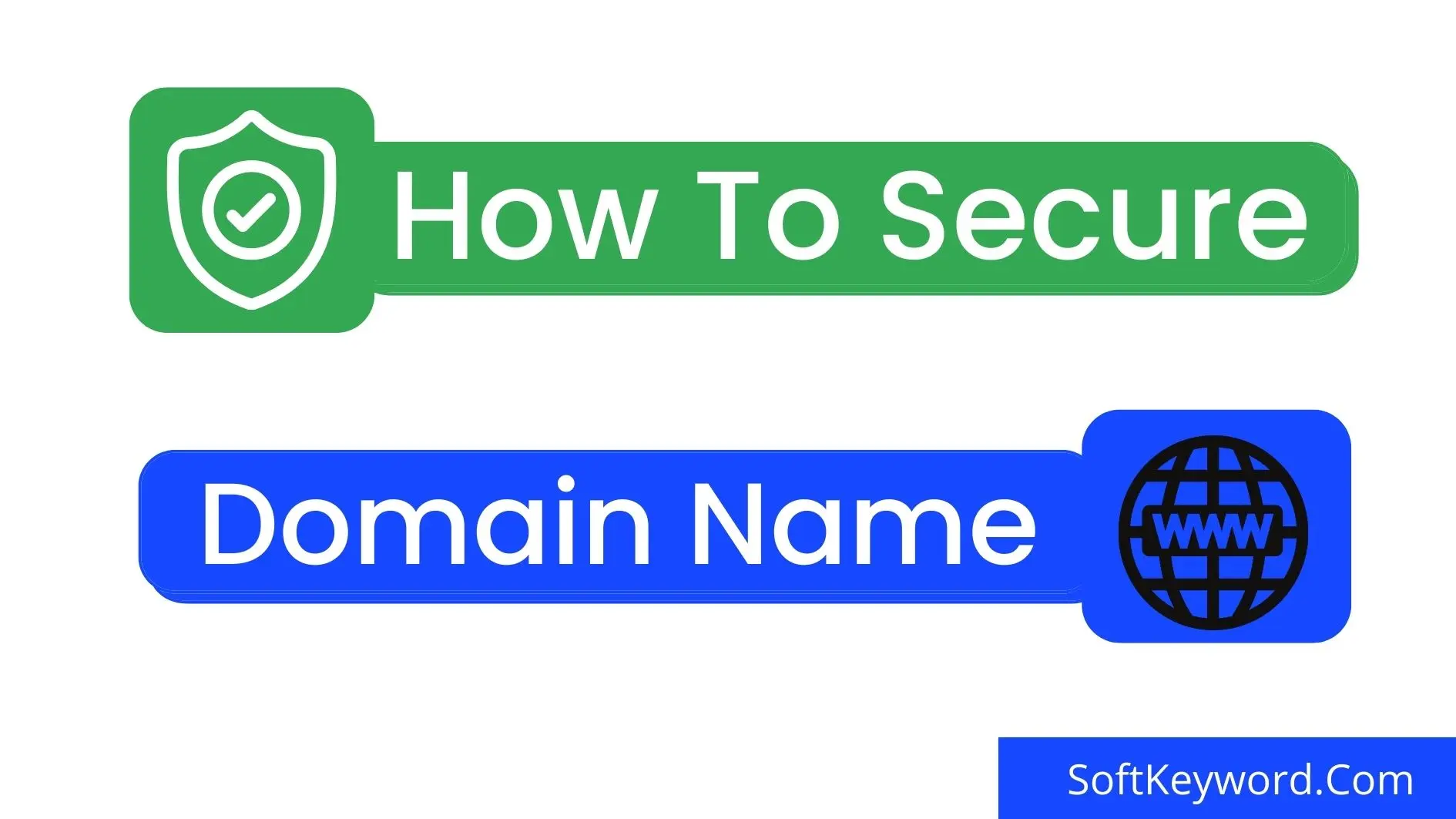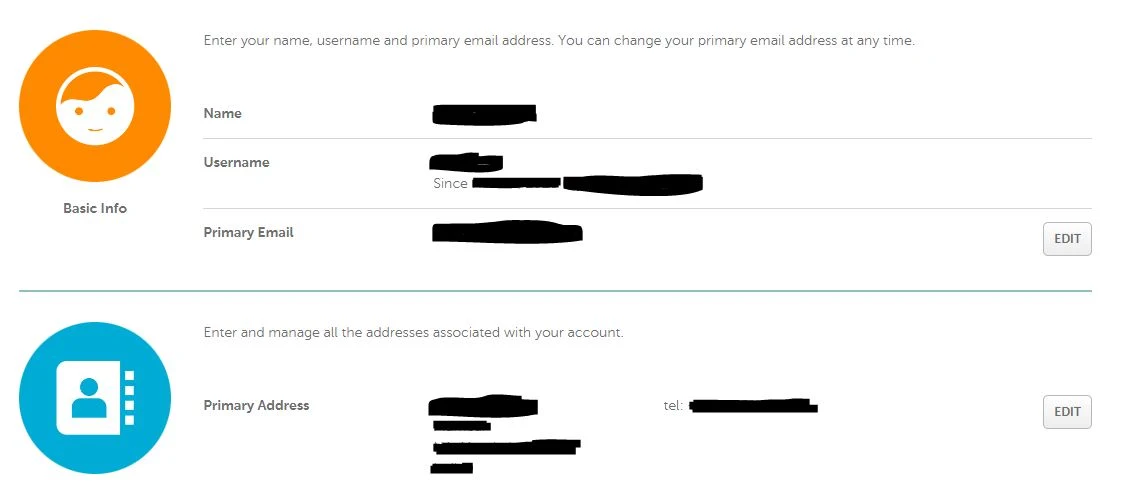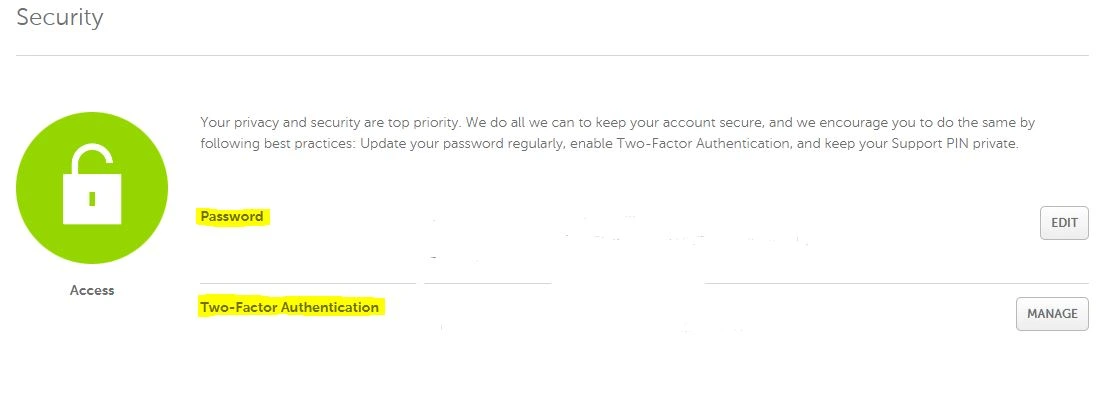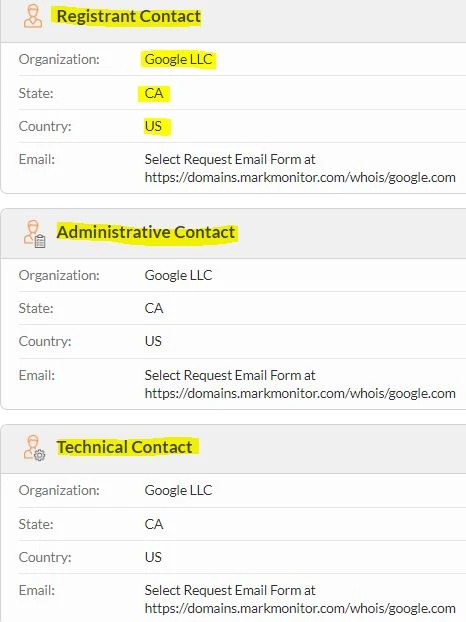I have purchased a domain name, but how do I secure my domain name?
No worries, I’m here with a guide on how to secure your domain name.
In this ultimate guide to Domain Name Security, you will learn how to quickly secure your domain name with the essential and recommended tips I will give you, which I also consider.
So, let’s see how to secure a website domain name.

First, you will learn why domain name security is essential and then see how to secure a domain name.
So, let’s dive in…
Why is Security for Domain Names important?
Why is domain name security so important?
Your domain name is your company’s or online business’s most valuable asset. Domain protection is more than just your website address because it reflects who you are as a company.
Am I Right?
So, whether you have been using your domain name for years or have just acquired it, you should protect it. Domain security is essential for protecting websites and visitors.
Domain Name Security is Important Because…
Do you know that Internet users are becoming more knowledgeable about the dangers of cyber theft?
And a security breach that makes all associated logins and the domain owner public is the worst thing that can happen to a website’s reputation.
Domain security is more essential than ever due to the rise in web-based attacks. I don’t know why people don’t take the most straightforward security precautions to safeguard their domains.
Fortunately, as the domain name holder, you can take many precautions to protect your domain name against loss and theft. Use important security advice to guard it and reduce the likelihood of being stolen or misused.
So, Make your domain name security a priority.
You will learn how to secure a domain name further in this guide.
What should I do if my domain is hacked?
If your domain name has been hacked, you should collaborate with your technical team to keep it secure and take appropriate action if attackers have gained access.
If a malicious attacker has compromised any of your domains, you should contact your registrar or DNS provider immediately, okay?
Additionally, it would be best to change all your passwords immediately. You can restore your website from a backup copy if you have one.
Now, what can you do to keep your Domain Name Safe?
Well, I am going to discuss it right now…
Let’s see how to secure a domain name with essential step and learn the domain name security best practices.
How to secure a domain name for free?
How can I secure my domain name for free?
Now, I’ll show you how to secure a website domain name with steps.
There are many ways to protect your domain name. I will tell you the essential things you can apply to protect your domain name.
You can apply step by step, build strong security for your domain name, and keep the domain name scammers far from your reach.
#1. Consider Trademark Infringement Risks
Considering Trademark Infringement Risks like Domain Name Trademark and Logo would be best. Fulfilling a trademark application for your domain name and logo is a good idea.
It may be possible to register your domain name as a trademark may be possible if it uniquely identifies your products or services. If you register your domain name and logo, you may be able to prevent others from using similar words.
That’s a very secure and legit way.
#2. Choose Domain Name Wisely
It would be best if you chose a unique and memorable name. When securing a domain name, it is crucial to contemplate acquiring variations and misspellings of your domain name.
This can stop other people from registering domain names that are similar to yours and could confuse or mislead your customers.
It can also protect your reputation and brand, and you can ensure that your online presence remains secure and that your customers can easily find and recognize your brand.
It would be best to consider essential factors to choose a domain name.
#3. Register The domain with a reputable provider
Now, you must select a trustworthy domain registrar to continue without interruption.
A domain name should be registered under the company name if someone leaves. Ensure your registrar has much experience and can handle the domains you want to register.
Don’t buy your domain from an unknown domain name registrar you’ve never heard of. Ensure the registrar is licensed to sell domains, has a good track record, and is reliable.
Look for more than just a low price when selecting a registrar; you will need high-quality service with responsive customer service.
See if your registrar offers additional security features like:
- Two-Factor Authentication
- Account changes are notified to you, such as a pending domain transfer.
- Technical support that is readily available and knowledgeable to assist you in implementing domain name security.
I have also mentioned the best places to buy domain names in detail.
#4. Keep contact information up-to-date
You should provide your domain name registrar with the correct and accurate information. There are chances that inaccurate information provided to your domain name registrar may result in the cancellation of your domain.
- It also helps you if your domain provider needs to contact you. You should give the registrar a permanent email address, contact number, or other details.
- Your domain name registrar may send you an email reminder before the renewal due date of your domain name.
- If there are any payment issues, if someone requests to transfer your domain name, or if there is a problem with the domain name, your registrar may be able to contact you at that address.
- As a result, it’s critical to double-check that the domain registrar’s contact information is current. It’s essential to keep the contact information up to date.

Ensure you’re not using a free service that will expire if you don’t renew it when you mention your contact email address. So use a permanent email address.
Avoid using an email address that contains the domain name for secure domain registration.
With a bit of caution, you can gain a lot of advantages. It’s just as essential to keep your domain name secure as it is to keep your hosting account safe.
#5. Renew registration before the expiration date
If you register a domain name for one year and renew it next year, keep track of your domain name registration’s expiration date to ensure you don’t forget to restore it.
If you have multiple domain names, you should consider combining the expiration dates of all their domain names to make renewal more systematic and easier to remember.
Or if you want an easier way to manage this thing, you can opt for a more extended period.
Here is how:
Longer Period of Registration
Instead of renewing your domain name annually, you can choose a domain name for an extended period.
Registering your domain name for years can help avoid forgetting to renew it later. You should be aware of Domain Name Scams. There is one more way to secure your domain name from expiring.
And that is Auto Renew.
Auto-Renew
You can enable the Auto-Renew option while checking out or later in the settings. This will help you secure your domain so you are not locked out when it expires.
Some people are attempting to trick you into paying them by sending you emails regarding your domain name.
If you’re unsure, delete or ignore them, and if you have any questions, contact the registrar directly. Just keep one or two current payment methods, such as a credit card, and update your payment information when your credit card expires.
You can turn on auto-renew, as shown in the below image…

#6. Secure your account
Anyone accessing your domain registrar account can hijack your domain name or transfer it to a new owner.
As a result, maintaining the security of your account is critical. This means you should use a long, strong password that is difficult for hackers to guess.
Provide backup payment details.
Including backup payment details in your domain name account is highly recommended.
Fortunately, you can add multiple payment methods to your account. Failing to update an expired credit card could result in losing your domain name, so having a secondary payment option is crucial.
Addinga backup payment method can significantly reduce the risk of losing your domain name. So, provide your backup contact information.
Use Strong Password
Use a Password That Isn’t Too Easy to Guess. Make a password with two random letters, at least one digit, and one symbol. This makes guessing the password more complex.
Online services are frequently hacked, exposing usernames and passwords to criminals who may try to hijack your domain name by using the information you provide for other accounts.
Create a strong password that you only use for your domain name account. Do not share your password: Never give anyone your online account login information.
Update your passwords regularly.
Regularly updating your passwords is essential for maintaining account security. This practice can prevent unauthorized access and protect your personal information.
I recommend using a strong password that is difficult to guess and avoiding using the same password for multiple accounts and safeguard your online presence and defend against potential cyber threats.

Enable two-factor authentication for account security
Two-Step Verification should be implemented. This is an additional security method of verification.
Wherever possible, you should use two-step verification. These will help you in preventing cyber criminals from stealing your data.
#7. Monitor for unauthorized changes or transfers
As a website owner, it’s essential to momes to prevent unauthorized changes or transfers. You can use domain locking to stop transfers to other registrars.
Watch out for scam emails trying to get your domain name info.
You must contact your registrar immediately for support if you believe your domain name has been transferred to another registrar or the registrant’s information has been changed without your permission.
#8. Lock the Transfer of your Domain Name
“Registrar Lock,’ also known as “domain lock” or “transfer lock,” is a service provided by most registrars. This lock protects your domain from being transferred without your permission, either accidentally or illegally.
Your domain cannot be transferred without permission if the registrar lock is enabled.
When a domain is “locked,” you can only transfer it by logging into your account and unlocking the domain. The registrar lock will not protect your domain name from someone accessing your account.
Conversely, this system will prevent someone from impersonating you and attempting to transfer the domain through phone calls or emails. In most cases, by default, it is locked. The transfer lock is implemented differently by each registrar.

To remove the lock, some require two-factor authentication, while others only need the registrant’s permission. Consult your registrar’s policies on transfer lock to see if it’s a service you want.
#9. Domain name system security extensions (DNSSE)
Using DNS protection services like Cloudflare, ZoneEdit, or DynDNS. They help you in the protection of your domain from DDoS and malware attacks.
Use Premium DNS
PremiumDNS is a cutting-edge DNS service that gives you complete control over advanced DNS settings, improving your website’s security, performance, and reliability.
You can be sure that your website will always be up and running. Thanks a lot for this. To a 100% DNS Uptime Guarantee and DNS served from multiple fully redundant, globally distributed Anycast locations.
Additionally, PremiumDNS is a flexible and affordable option for all website owners because it works with any domain registered with any registrar.
#10. Protect with SSL
One of the most well-known security features available is SSL protection. An SSL Certificate can help you protect your customers from identity theft.
You must always use an SSL certificate with a domain name.
Google also says that SSL is a ranking signal in its update on August 07, 2014.
You should Install an SSL certificate to secure your website and protect your users’ information with HTTPS encryption.
SSL certification encrypts sensitive information sent from a customer’s computer to your domain web servers, such as their name, bank account information, and billing address.
This procedure ensures that their personal information is not compromised. You can also get an SSL certificate from Domain Name, Web Hosting Provider, or a 3rd Party.
Also, up can learn how to install SSL certificate on your website for free.
#11. Use privacy protection to hide personal details
Domain Privacy Protection adds an extra layer of security against unwanted inquiries about who owns the domain name or who can contact them.
Many registrars provide domain privacy [WHOIS] as a free service, or they may charge a small monthly fee for it.
Domain name privacy is essential. You can also learn more about privacy protection with an example.
What is WHOIS Database?
WHOIS is a public database that provides users with information about domain name ownership. All website owners are required to provide their registrar with accurate contact information. A WHOIS record is created using the information you provided when registering your domain. Anyone searching the WHOIS database can find your contact information.
This information is precious to domain thieves because they can impersonate you and try to transfer your domain to a new owner using your contact information.
This information could be used by domain name thieves to transfer your domain name to another user or to contact you and reveal your password.
To avoid this situation, you should opt for private domain registration. Most domain registrars offer domain privacy as an add-on service for site owners who don’t want their contact information to be visible to the public.
The domain registrar’s contact information will be swapped with yours.

You can use Domain Privacy Protection to keep your name, address, and phone number from becoming publicly available.
Here’s an example of a WHOIS result for an unprotected.com domain that includes the registrant’s information.

All protected WHOIS queries return only basic information about the registrar. You can make use of services like WHSR Tool or Who.is to check your WHOIS information.
#12. Be aware of Scams
Scammers try to manipulate you by exploiting your sense of security and confidence to gain control of your domain without your permission.
Don’t let scammers steal it from you. Avoid falling into the trap of an obsessive domainer unless you have a strong desire to sell your domain.
Ignore domainers’ insistent request emails as much as possible. If they insult or threaten you, report them to your email provider and registrar or, if available, to the domainer’s ISP. Defamation and menacing are both crimes that can lead to legal consequences.
#13. Register your domain name for ten years
Registering your domain name for a decade [10 years] can be a wise investment that saves you time and money in the long run.
By doing so, you can avoid losing your domain name if you forget to renew it. However, it’s important to note that registering your domain name for ten years doesn’t guarantee you’ll keep it for that entire duration.
You can also see the complete guide on registering a domain name.
#14. Not for Sale
If you receive an email regarding the “selling or purchasing of your domain name,”
Make it clear with a homepage banner or a disclaimer that any offer to buy your domain will be ignored.
#15. Online Brand Name Thief
Set up Google alerts for your company name and use social media management tools like SocialMention to see when your company name is mentioned online.

This will notify you if someone else is illegally using your company name, a similar name, or a similar trademark, allowing you to take swift action.
If you act quickly, you can stop the infringement before it damages your brand.
#Bonus. Surf Online Safely
You must care when clicking email links, opening attachments, and visiting websites. Criminals can use these methods to steal your username and password.
Wrapping Up
Did you use these tips on how to secure a domain name?
And the number 5 step is that you should never ignore.
Let me know in the comment below which things you already know and which you don’t.

